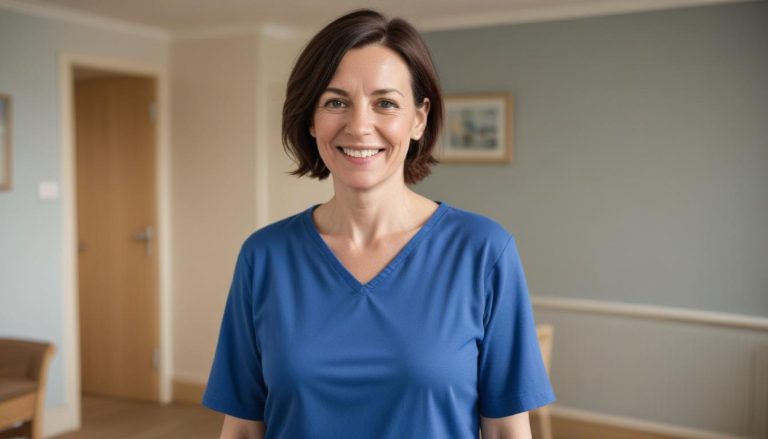
Telecare is a service that uses technology to support individuals who require supervision, care, or assistance in their daily lives. It helps people live more independently, often in their own homes, while ensuring their safety and well-being. In health and social care, telecare refers to the use of electronic devices to monitor, alert, or assist individuals, particularly those who are elderly, have disabilities, or manage long-term health conditions.
Telecare is designed to provide reassurance to individuals who need support, their families, and health professionals. It reduces reliance on in-person interventions and ensures that individuals can receive prompt help when needed. The service is delivered through a range of devices, such as alarm systems, motion sensors, and wearable technology.
How Telecare Works
Telecare involves a combination of technology and human response services. Devices are installed in an individual’s home or worn on their body to monitor certain activities, environmental changes, or health indicators. These devices automatically send alerts to a care team, family members, or a 24-hour call centre when assistance is needed.
The process can be broken down into three main components:
- Monitoring devices: These include equipment that tracks movement, detects hazards, or monitors personal health status. Examples are fall detectors, sensors on doors, and smoke alarms.
- Communication systems: Devices are linked to central monitoring systems or helplines, such as call centres, which respond to emergencies.
- Human intervention: Once an alert is raised, carers, health professionals, or emergency services can take immediate action.
This system ensures continuous supervision without requiring someone to be physically present at all times.
Who Can Benefit from Telecare?
Telecare is widely used to assist individuals who need additional support in managing their daily lives. Common groups who benefit include:
- Older adults: The elderly often face issues such as reduced mobility, memory loss, or risks of falling. Telecare provides peace of mind by alerting carers to hazards.
- People with disabilities: Individuals with physical disabilities or sensory impairments may use telecare equipment to maintain independence and safety.
- Individuals managing chronic conditions: People with long-term health conditions, such as diabetes or heart problems, can be monitored for signs of trouble.
- Those with cognitive impairments: People living with dementia often face challenges with orientation or safety. Telecare ensures they are supported with devices monitoring unusual behaviour.
- Carers and families: Family members tasked with looking after a loved one benefit from telecare since it reduces the stress of constant supervision.
Telecare is flexible and can be adapted to meet the specific needs of different individuals.
Common Telecare Devices
Telecare involves a wide range of devices to provide care and support. These include:
Personal Alarms
Personal alarms are designed for individuals to call for help quickly in an emergency. They are usually small devices worn as pendants or wristbands. If someone feels unwell or needs urgent support, they press a button to connect to a call centre or carer.
Fall Detectors
Fall detectors monitor movement and can recognise when someone has fallen. If a fall occurs, the device automatically sends an alert without the person needing to activate it manually. This is particularly useful for older people or anyone prone to falls.
Smoke and Carbon Monoxide Alarms
These alarms detect fire or dangerous gases and immediately alert a carer or emergency service. For individuals who may not recognise the danger, such as those with dementia, these alarms offer vital protection.
Door Sensors
Door sensors are installed on doors and send alerts if they are opened at unusual times. They are helpful for individuals prone to wandering, particularly at night, as carers can be alerted in time to intervene.
Movement or Bed Sensors
These sensors track activity or inactivity in certain areas, such as a bed or chair. If a person hasn’t moved for a prolonged period, an alert is raised to check their well-being.
Medication Dispensers
Many people forget to take medication on time. Automatic dispensers dispense the correct dose of medication at the right time. If the person doesn’t access the medicine, an alert is generated to notify someone that assistance is needed.
GPS Trackers
For individuals who may become disoriented or lost, such as those living with dementia, GPS trackers help locate and assist them quickly. The device provides real-time information about the person’s location.
Environmental Sensors
Environmental sensors monitor the home for issues such as flooding, extreme temperatures, or gas leaks. These sensors help identify risks early to prevent harm.
Benefits of Telecare in Health and Social Care
Telecare delivers several advantages for individuals, their carers, and health services. It supports independence, promotes safety, enhances quality of life, and creates efficiencies in care delivery. Here are the specific benefits:
Promotes Independence
Many individuals prefer to live in their own homes rather than move to residential care. Telecare allows people to maintain a level of independence while knowing they can access help when needed.
Ensures Rapid Responses
Telecare systems provide quick alerts when something goes wrong. For example, if someone falls, help can reach them quickly, reducing the risk of complications.
Reduces Carer Stress
Family members or full-time carers often feel overwhelmed by the responsibility of looking after loved ones. Telecare offers reassurance by providing an extra layer of support, allowing carers to take breaks without worry.
Reduces Healthcare Costs
By avoiding preventable hospital admissions or reducing reliance on full-time in-person care, telecare often leads to financial savings for both families and healthcare systems.
Personalised Care
Telecare systems cater to specific needs, helping professionals and carers set up devices based on someone’s exact requirements.
Enhances Safety
Alarms, monitors, and emergency systems ensure the individual is safe, even when no carer is physically present with them.
What are the Challenges of Telecare?
While telecare offers several benefits, it is not without challenges. People using or managing these systems may face some barriers:
- Technology dependence: Devices need to function correctly to be effective. Malfunctioning equipment might leave someone without support.
- Internet or phone connectivity: Many telecare systems rely on mobile or internet networks, which can be impacted by outages or location difficulties.
- Complexity for users: Some individuals, particularly older people, may struggle to use or understand the technology.
- Cost barriers: Initial set-ups or subscription fees may be difficult to afford for some individuals.
These challenges require planning and regular checks, but with good management, telecare remains a valuable tool in care delivery.
Examples of Telecare in Use
Supporting Older Adults
An 85-year-old woman lives alone after her children moved away. She has mobility problems and is prone to falling. Telecare devices such as a fall detector and personal alarm allow her to remain independent. If she falls, the system immediately alerts her carer.
Monitoring Chronic Conditions
A man in his sixties has been diagnosed with heart disease. His telecare includes wearable technology that monitors his heart rate and blood pressure. If irregularities occur, the device alerts medical professionals.
Protecting Individuals with Dementia
A woman with dementia often forgets to turn off her gas hob. A telecare system with environmental sensors detects when the gas is left on and shuts it off automatically, reducing risks.
The Future of Telecare
Telecare continues to evolve with improved technologies and smarter devices. Artificial intelligence, for example, could analyse individual behaviours and predict risks before they happen. Such advancements are expected to provide even greater protection and convenience for those relying on telecare systems in the years to come.
By offering a lifeline of support, telecare ensures that individuals can enjoy greater independence, safety, and dignity while relieving the strain on carers and healthcare services.
Subscribe to Newsletter
Get the latest news and updates from Care Learning and be first to know about our free courses when they launch.




